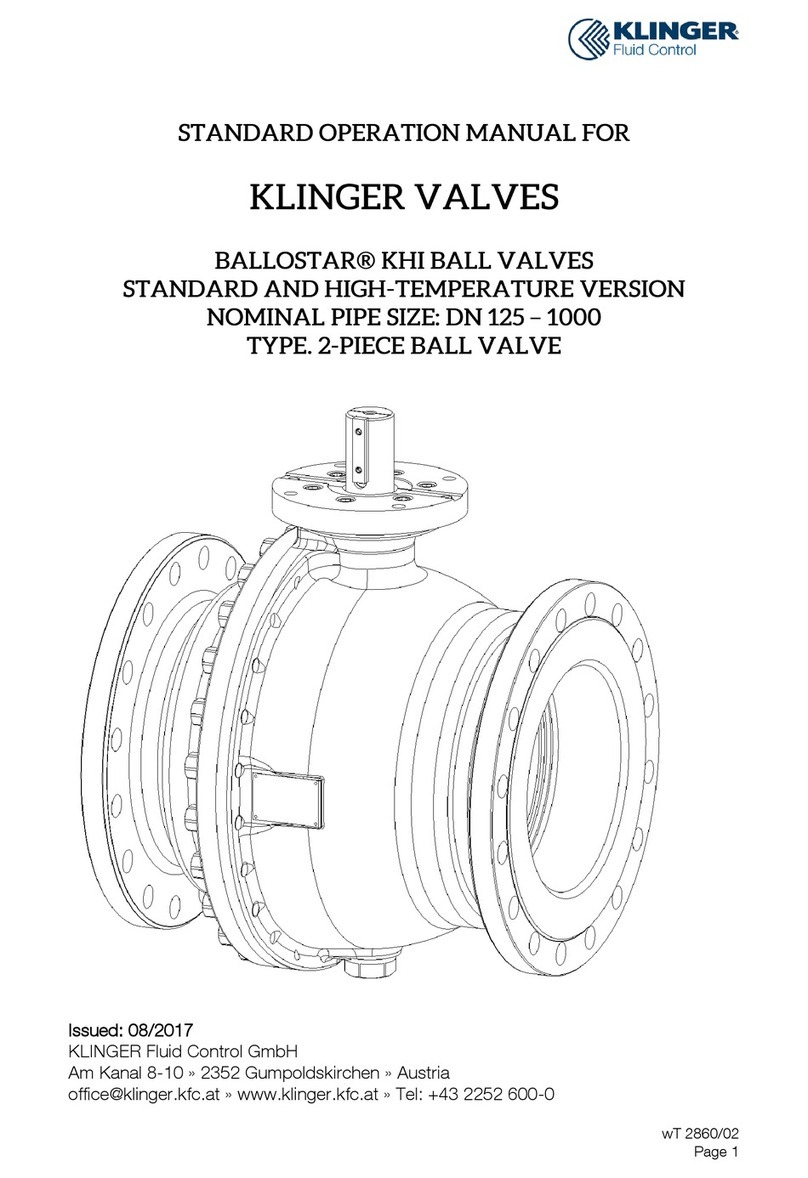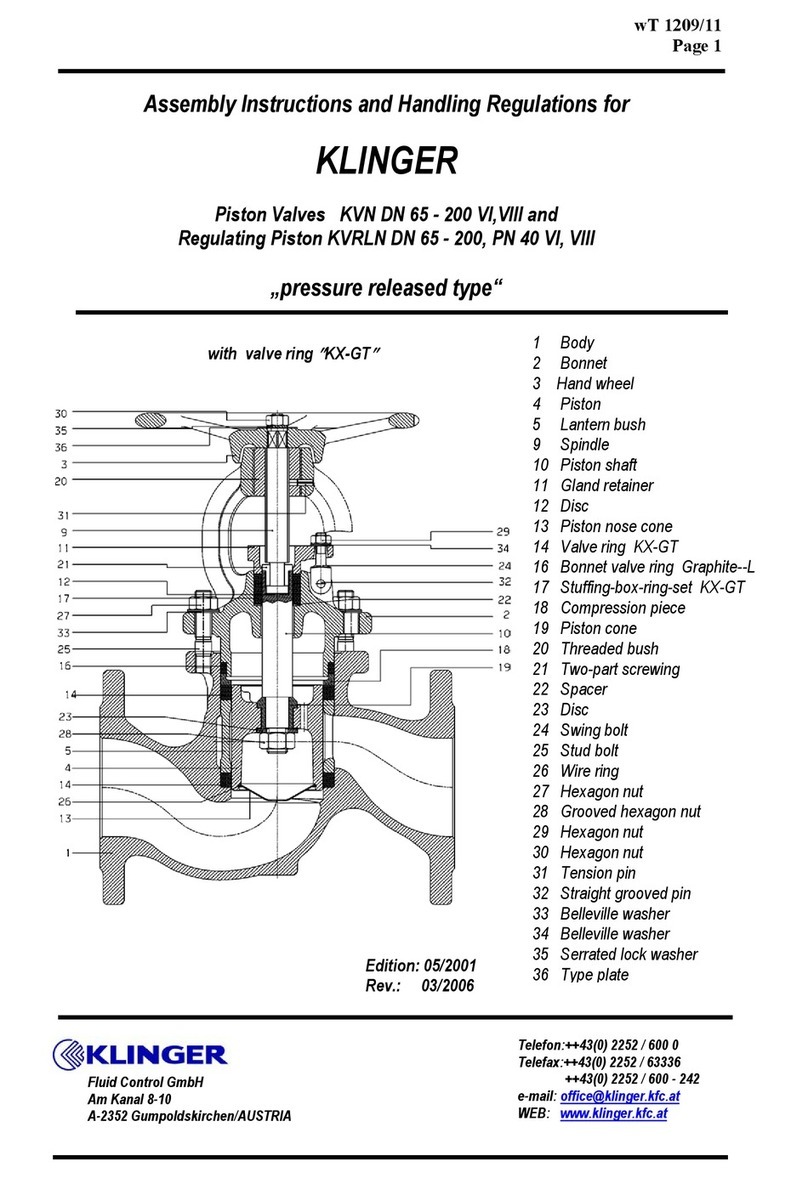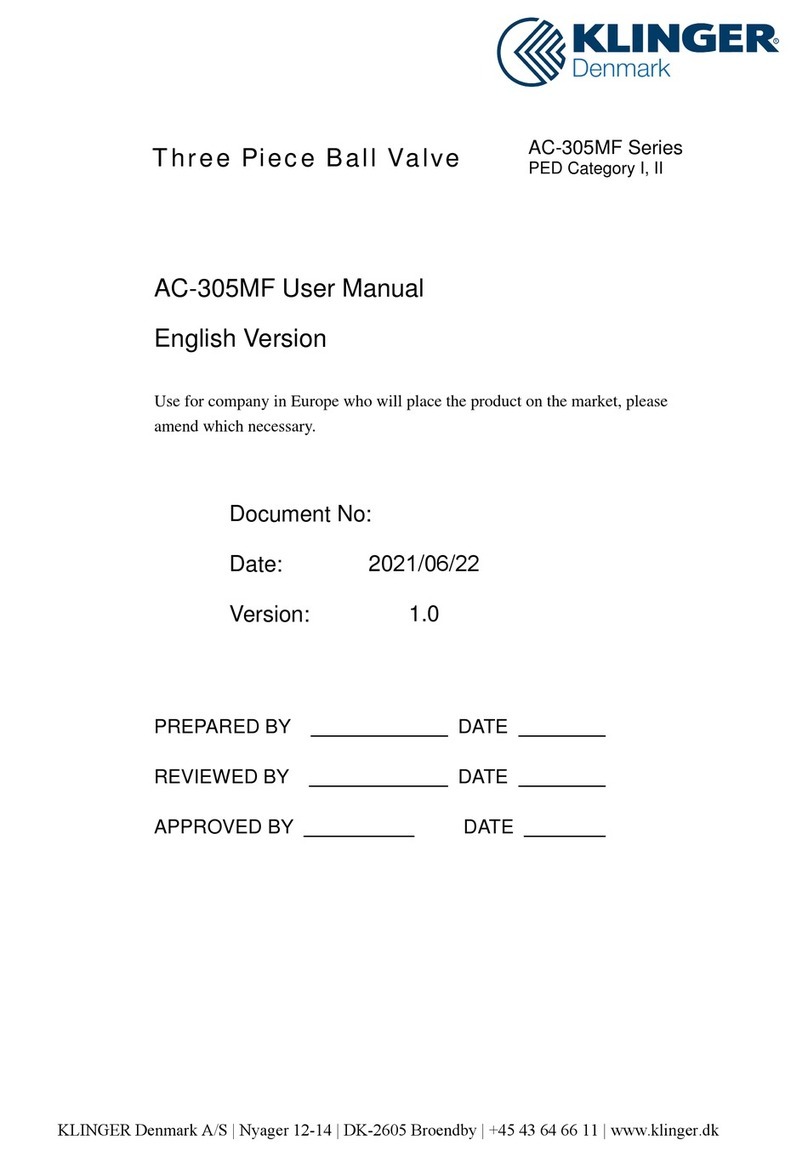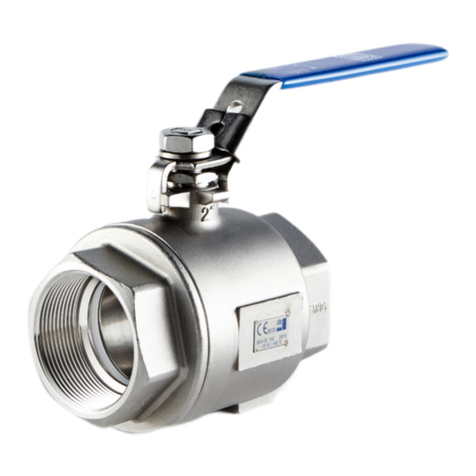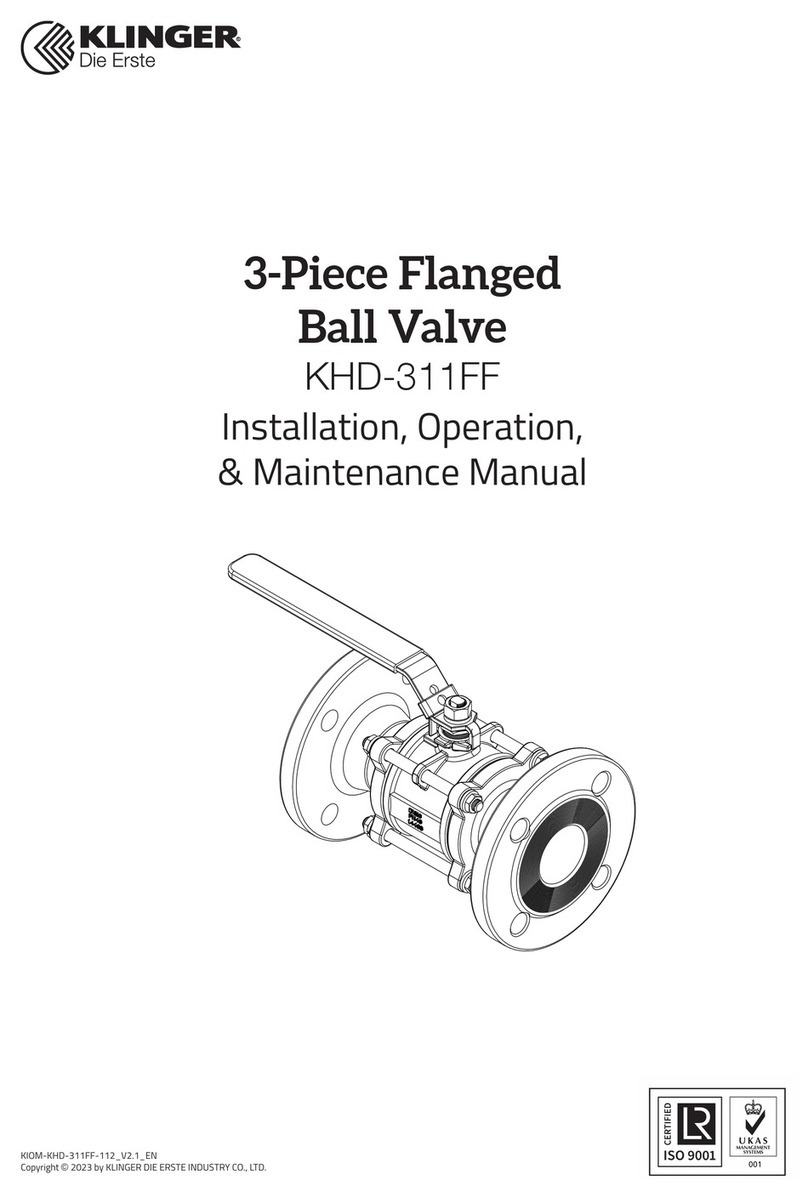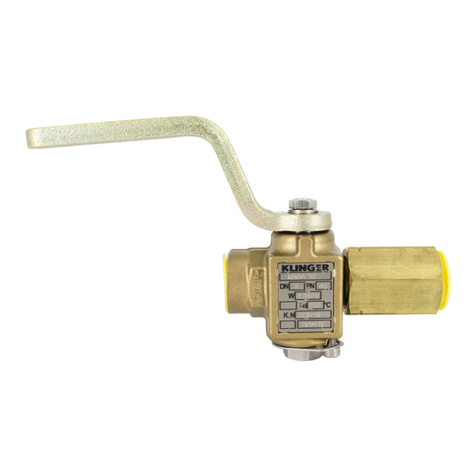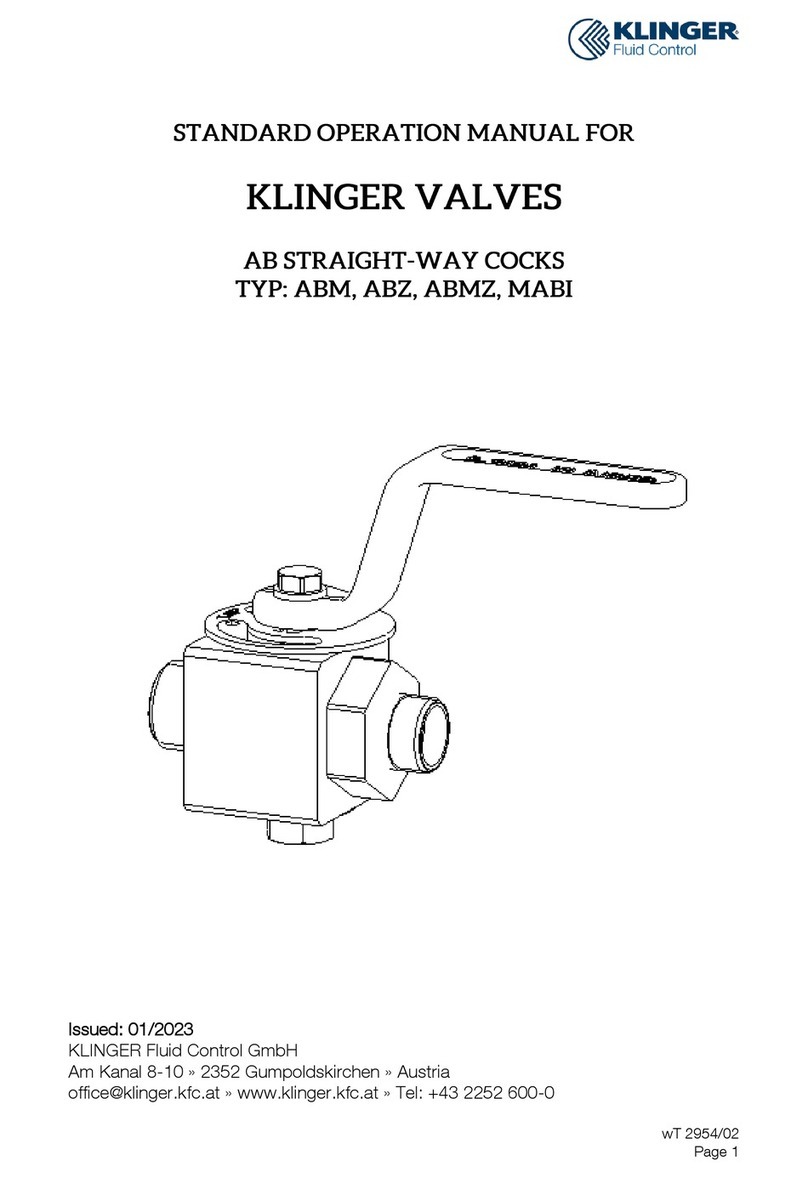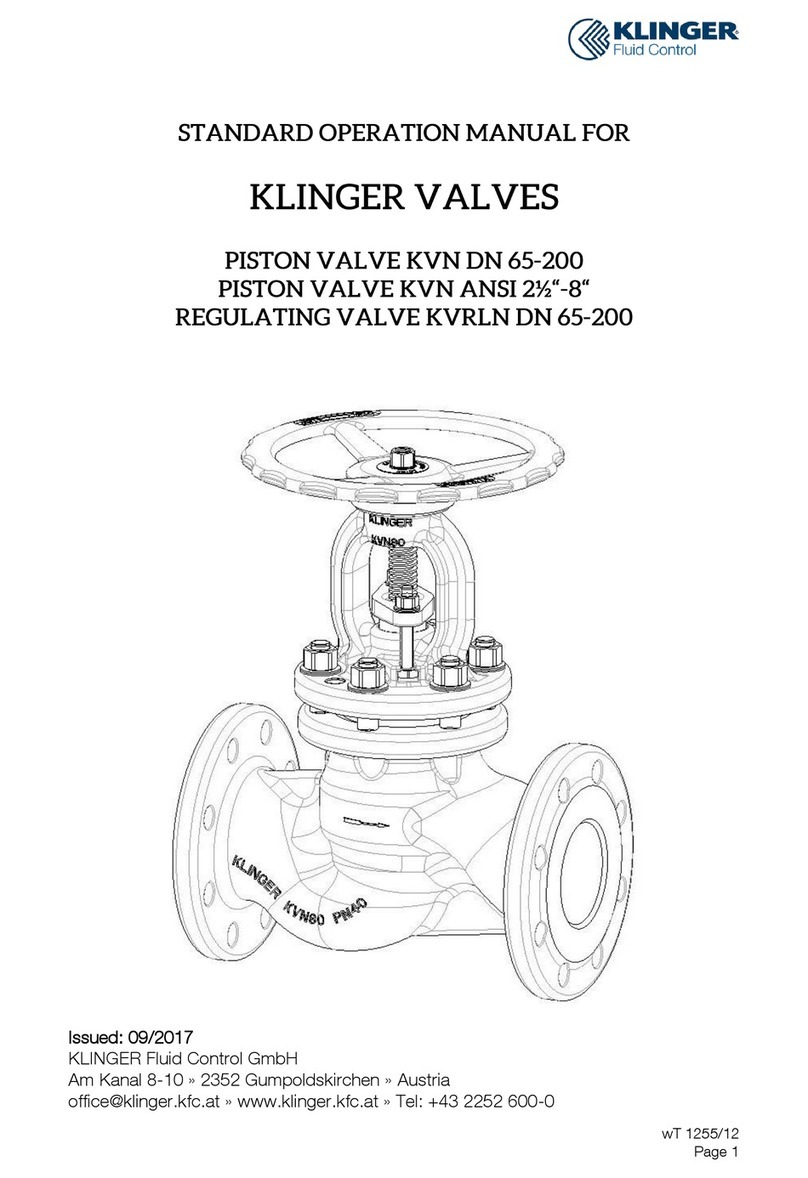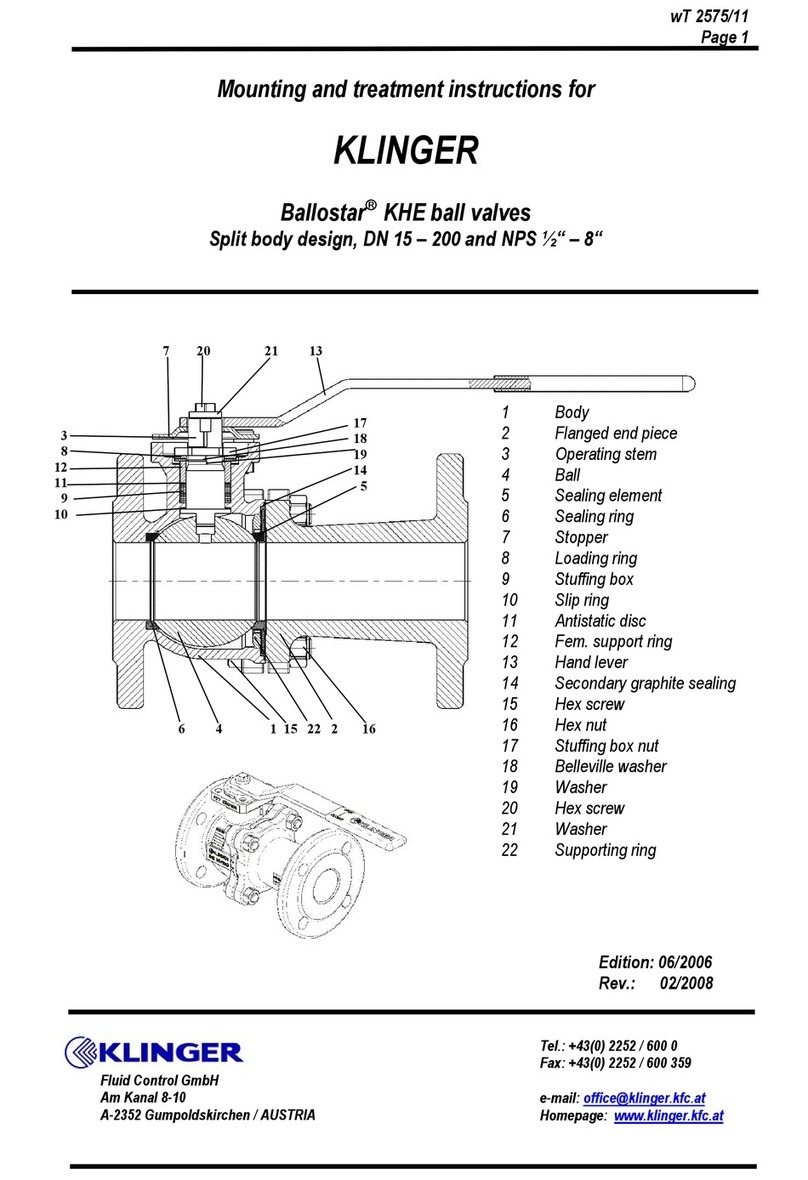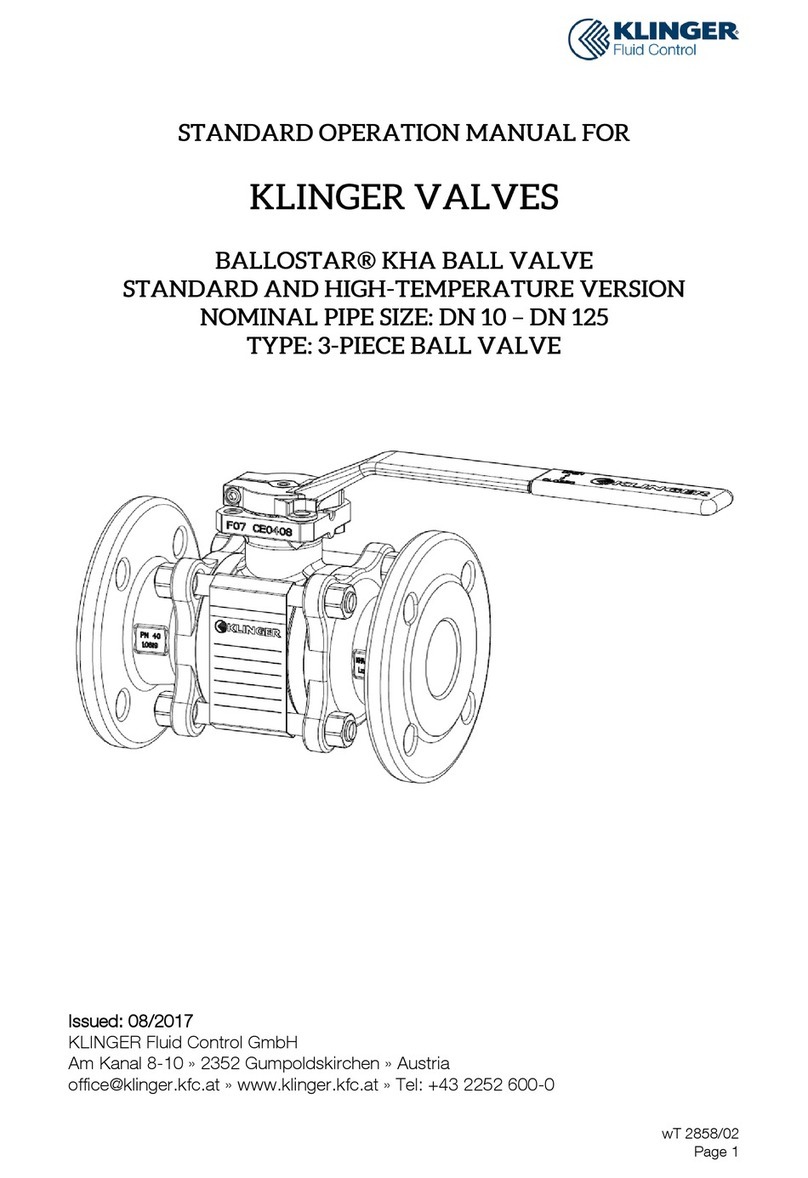
IOM-Series KHD-M4F(a)-110_V1.0_EN
Copyright © 2022 by KLINGER DIE ERSTE INDUSTRY CO., LTD. 54 IOM-Series KHD-M4F(a)-110_V1.0_EN
Copyright © 2022 by KLINGER DIE ERSTE INDUSTRY CO., LTD.
Direct Mount 4-Seated 3-Way
Flanged Ball Valve M4F(a)
Direct Mount 4-Seated 3-Way
Flanged Ball Valve M4F(a)
Chapter II
Installation
Flush the pipeline carefully before installing the
valve. The particles of dirt or debris or welding may
damage the ball sealing surface and seats. Also, be-
fore installing, check all valve and mating flanges to
ensure gasket surfaces are free from defects.
2.1 General Notes
1) Direction
User must define the preferred mounting orienta-
tion with respect to the system pressure. The mark-
ing on the top of stem and handle help to identify
the upstream side (high pressure) and downstream
side (low pressure).
Note:
The pattern and flow direction of the ball will be ex-
actly marked on the top of valve stem. The marking
on the handle is ONLY for initial reference when re-
ceiving the goods. The user may change the instal-
lation of the handle, and invalidate the markings on
the handle, resulting in erroneous flow control.
Figure 2.1.1 The L-Port marking on the top of stem and
initial installation of handle.
2) Position
The body, cap and gasket are in the connection area
of ball valve and pipeline. The bear weight ability
and gradient are very important to the pipe instal-
lation. Do not make the pressure from the pipeline,
and stress to concentrate on the connecting area of
body and cap. Ball, seat, and stem will be damaged.
Consequently, deformation and leakage may occur.
Note:
Considering the balanced force of the valve seat,
DIE ERSTE recommends the use of a horizontal po-
sition when installing the 3-way ball valves which
size < DN80 (3”) to maximize sealing and reduce ac-
cumulation of particles.
3) Fittings
Select the correct size of fittings according to the
pipeline specification. Mating the valve to the pipe-
line adequately with appropriate bolts. Do not at-
tempt to correct pipeline misalignment by means of
flanged bolting.
Note:
Over tightening of any side may cause leakage.
4) Systems hydrostatic test
Before delivery, valves are tested 1.5 times the al-
lowable pressure at ambient temperature in OPEN
position. However, after installation, the piping sys-
tem may subject to system tests, as condition not
to exceed the marking pressure.
5) Pre-Installation Wash
Before the valve installation, clean the pipeline sys-
tem to remove any foreign deposits by water. Clean
the connecting flanged end surfaces as well to en-
sure tight sealing.
2.2 Installation of Flanged Ends
1. Before installing the valves, make sure the
flanges and the pipe are free from grit, dirt or
burrs.
2. The flanges must be aligned and parallel with
the correct distance to allow the valve face-to-
face dimension and gaskets to fit between.
3. Tighten the flange bolts in a crossover pattern,
with a torque values determined by the gasket
manufacturer, other variables like gasket type
and material, bolt, flange and lubricant affect the
tightening torque values.
4. Note that the bolts tightening must be uniform
in order to create a parallel movement of the
two flanges and uniform deformation of the
gasket in between them.
5. Before pressure testing the valves, bring the
valves to the half OPEN position to ensure pres-
sure reaches the stem seals and to avoid unnec-
essary loading of the seats. Fail-to-close actu-
ated valves should be brought to the half-OPEN
position.
NOTE:
Do not fasten supports to the flange bolting or the
actuator.
2.3 Pneumatic and Electrical Connections
When installing the actuator, make sure that the
valve-actuator combination functions properly. The
flow direction is indicated by a slit at the top of valve
stem. See Figure 2.2.
If possible, install the valve so that the actuator can
be disconnected without removing the valve from
the piping.
Please refer to the appropriate instruction manual
shipped with the automation devices for the in-
stalled actuator, positioner, filter/regulator, solenoid,
and/or limit switches.
When making pneumatic connections, it is recom-
mended that PTFE tape or paste is used on thread-
ed joints, unless otherwise specified by the com-
ponents instruction manual. The pneumatic supply,
such as dry air or nitrogen, should be clean. When
making electrical connections, wiring of components
should be in accordance with any and all applicable
local and national codes and standards.
Before installing the actuator, use an adjustable
wrench to manually rotate the valve stem sever-
al times. This rotation breaks the torque that may
have built up during long-term storage.
CAUTION:
Do not exceed the valve performance limitation.
CAUTION:
Before installing, make sure the line pressure has
been relieved, and any hazardous fluids have been
drained or purged from the system.
NOTE:
Actuators and accessories are only discussed
briefly. Please refer to individual manuals for fur-
ther information on their IOM manuals.
Check the line gauge to ensure that no pressure is
present at the valve. Ensuring media is released by
operating valve slowly to the half open position.
Ideally, the valve should be decontaminated when
the ball is in the half open position.
These valves, when installed, have body connec-
tors which form an integral part of the pipeline
and the valve cannot be removed from the pipeline
without being dismantled.
1.4 Storage
If the valves are not to be installed immediately,
please store the valve carefully before installation,
preferably indoors in a dry and clean place.
Also, the valve ports should be sealed by plastic
caps to prevent dirt from entering and damaging in-
ner parts.
Note:
For the 3-way ball valve, do not keep the ball in par-
tially open position for an extended period of time,
since this could cause seat leakage.
Figure 2.1.2 The T-Port marking on the top of stem and
initial installation of handle.
